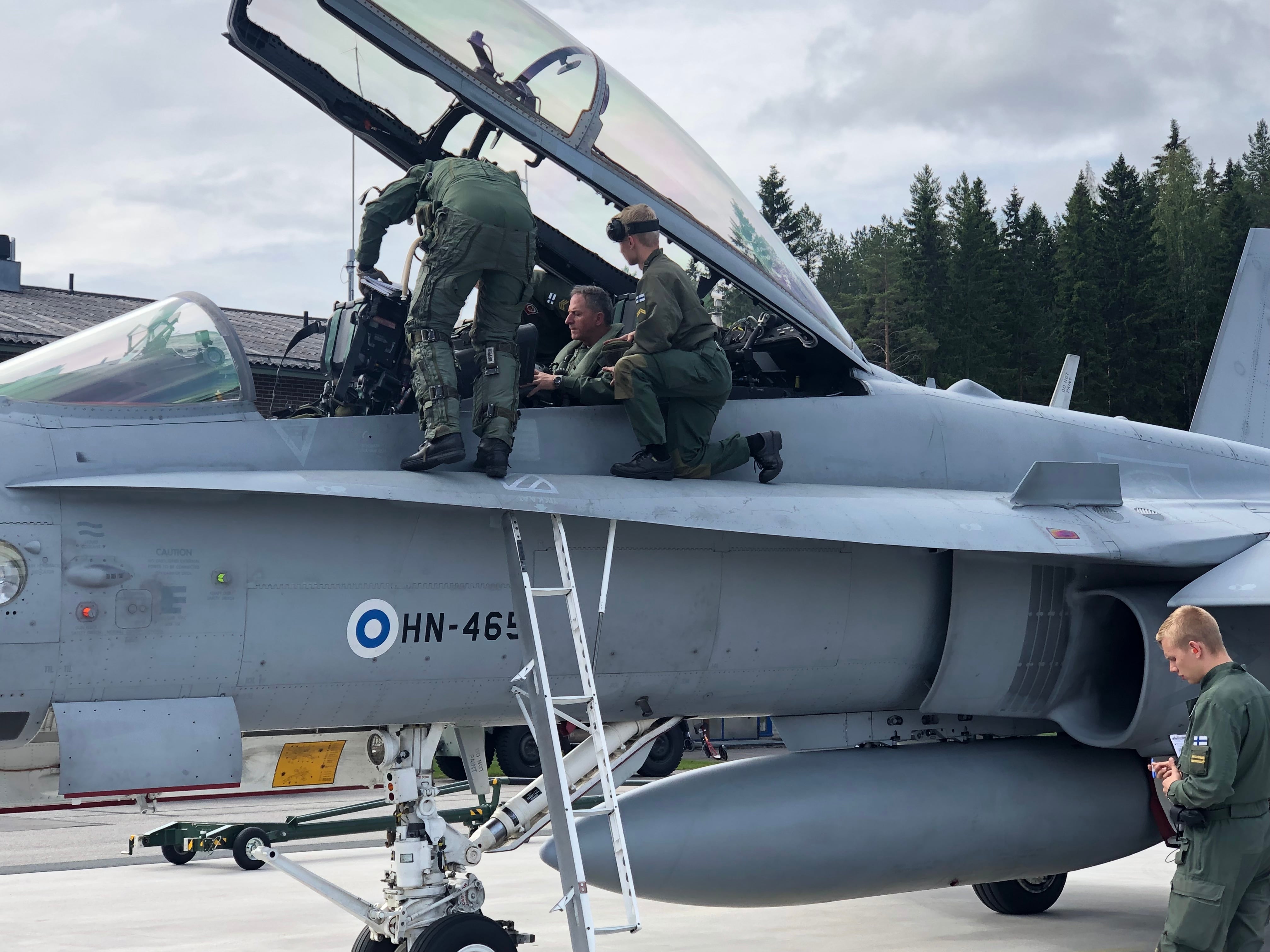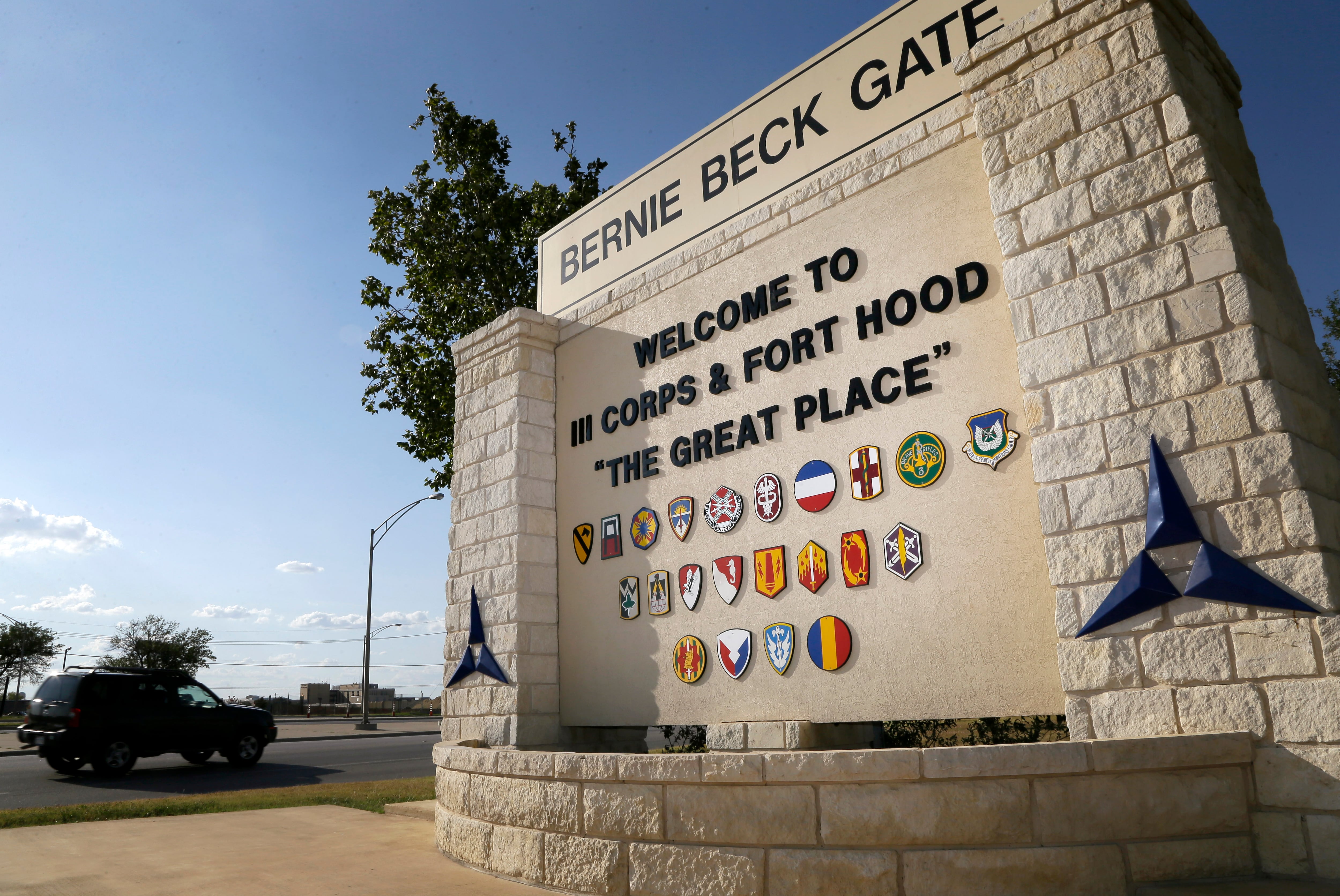KUOPIO AIR BASE, Finland — On a cool summer morning over the forests of Finland, the U.S. Air Force’s top general flew in the backseat of an F/A-18 Hornet, observing a Finnish pilot conducting an air defense training mission.
The singular experience, which capped off Chief of Staff Gen. Dave Goldfein’s first trip to Finland July 14 and 15, highlighted the deepening relationship between the U.S. and Finnish militaries.
U.S. and Finnish officials who spoke to Defense News during the visit could not point to another example of the service’s top general flying in a Finnish fighter. And while such flights aren’t uncommon among the U.S. Air Force and its closest allies, Finland is notably not a part of NATO.
“When I fly with another country, there’s actually a message there of mutual trust and confidence and really an opportunity to highlight the professionalism of their air force,” Goldfein said after his July 15 flight. “From brief, to execution in the air, to the debrief … I could have been at Nellis Air Force Base with any of our F/A-18, F-15, F-35, F-22 pilots, and I couldn’t tell the difference.”

The sortie played like a textbook encounter in a defensive counter-air mission, Goldfein said, commending the “exceptional” quality of the Finnish pilots.
Goldfein’s pilot flew in a two-aircraft formation against four other jets. The fighter was tasked with preventing the enemy from bombing a key target. The experience allowed the U.S. general to see Finnish tactics in action, hear communications across the radio, and observe how the Finnish pilot used radar and data links.
“He is getting a view on how we operate. Now he can see with his own eyes and hear the discussion,” said Col. Juha-Pekka Keranen, deputy chief of staff for Finland’s air force. “That’s the main point.”
Meanwhile, Russia sent a message of its own, sending a heavy bomber, fighter and airborne early warning and control aircraft to points in international airspace nearby Finland.
“Finnish Air Force F/A-18s on #QRA [quick reaction alert] were scrambled on 15 July to identify Russian Tu-160, A-50 and Su-35 aircraft in international airspace above the Gulf of Finland and the northern part of the Baltic Sea. The airspace of Finland was not violated," reads a tweet from the official Finnish Air Force Twitter account.
A spokesman for the Finnish air force told Defense News that Goldfein’s jet was not on quick reaction alert duty, but could not elaborate on which base had scrambled aircraft for the intercept.
In its own tweets, the Russian ministry of defense stated that the Tu-160 bombers had completed a planned seven-hour flight over the Baltic Sea in international airspace on Monday. At certain stages of the route, Russian aircraft were accompanied by Danish air force F-16s, Finnish F/A-18s and Swedish Gripen fighter jets.
Russia’s activity in the region was a source of conversation between Goldfein and Finnish military officials, including air chief Maj. Gen. Pasi Jokinen and defense chief Gen. Jarmo Lindberg, during his two-day trip to the country.
They spoke about a variety of topics, including air base resiliency, space operations, command and control capabilities and opportunities for cooperation in a changing threat environment, Goldfein said. Before the trip to Finland, Goldfein met with Estonian defense officials on July 13, marking his first stop at the country as the head of the U.S. Air Force.
Unsurprisingly, both countries see Russia’s invasion of Crimea as a “significant turning point" and have become more cognizant of their eastern neighbor’s military capability after its takeover of the Ukrainian territory in 2014, Goldfein said.
“[There are] huge seeds of distrust between them and Russia. Let’s just say they take the threat seriously and their interest in partnering with us is incredibly important to them.”
That sentiment was echoed by Jokinen, Goldfein’s Finnish counterpart, who said that Finland’s air force has been operating in a “new normal” since the annexation of Crimea, which prompted a rise in activity around the country’s airspace.
“Activity in the Baltic region and in this region is in a little bit elevated level, let’s put it that way. And of course, our eastern neighbor is actively doing things in Syria and eastern Ukraine. It has had some effects,” he said, adding that, “Things are relatively stable. We have good relations in all the directions.”
Nonetheless, the pilots of Kuopio Air Base keep busy. The installation is home to almost half of Finland’s 64 F/A-18C/Ds — Finnish air force officials declined to comment on the exact number of jets and pilots based there — but in a normal day, about 10 of those jets are flying three to four times, said Col. Timo Herranen, commander of Karelia Air Command, located at Kuopio.
“The activity has increased over the past five years,” he said. “We don’t fly more; our flight hours remain stable. But I would say we have slightly more operational flights and air policing flights.”
The Finnish Hornets have recently been modernized with new displays and weapons capability, and the new command and control infrastructure that has also been fielded over the past couple years is bearing fruit for operators.
“On the whole it’s easier and more efficient to distribute data to all players, and that’s what we are [hoping for]," Herranen said. “If a fighter sees something, he or she can distribute the data to other fighters and other command posts, and the data goes back and forth, for example.”
Updated on 7/16/2019 with information about the Finnish encounters with Russian aircraft.
Valerie Insinna is Defense News' air warfare reporter. She previously worked the Navy/congressional beats for Defense Daily, which followed almost three years as a staff writer for National Defense Magazine. Prior to that, she worked as an editorial assistant for the Tokyo Shimbun’s Washington bureau.





